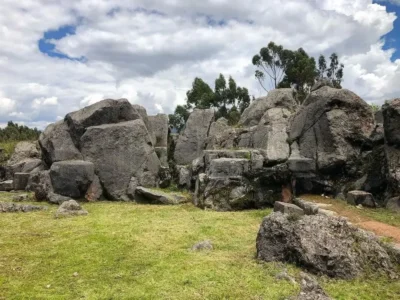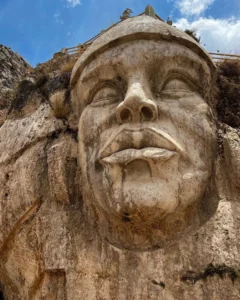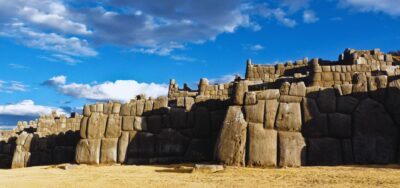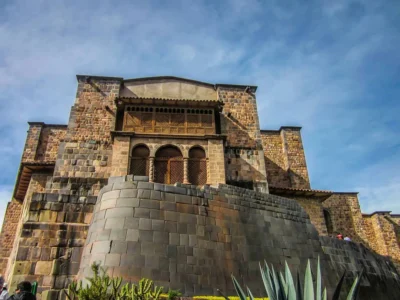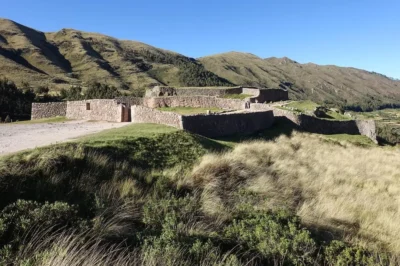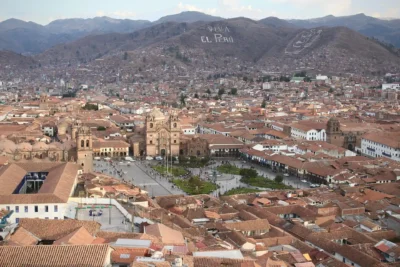The White Christ of Cusco is one of the city’s most emblematic figures. Located on a hill on the outskirts, this monument is not only a symbol of peace and protection for the people of Cusco but also an excellent viewpoint.
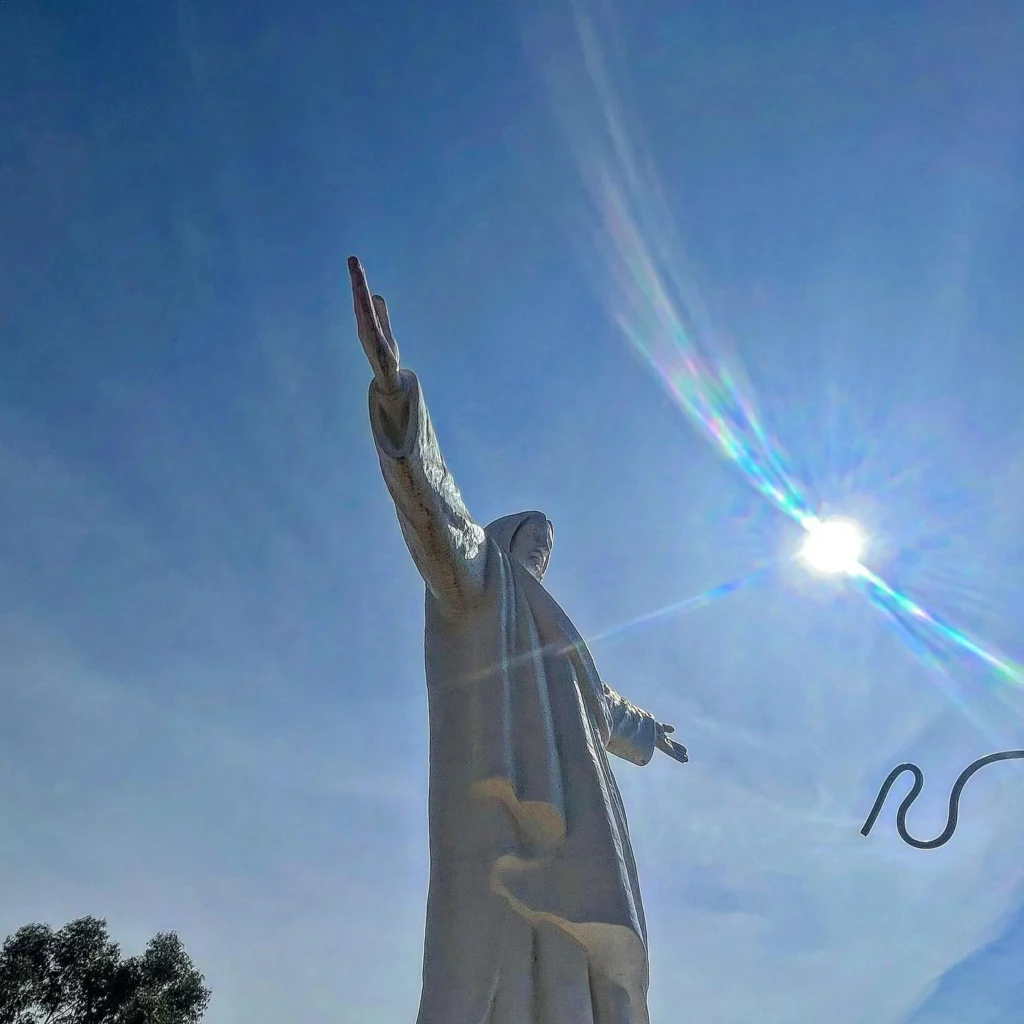
From this point, you can enjoy the most impressive views of the city and the majestic Andean mountains that surround it.
If you plan to visit Cusco, Cristo Blanco is a must-see destination to include in your itinerary. This monument stands 8 meters tall and was inaugurated in 1945 as a gift from the Palestinian community residing in the city.
Accessing this viewpoint is easy: you can choose to take a 30-minute walk from the Plaza de Armas or take local transportation that will take you directly to the site. The visit is free, and it is recommended to go at sunset to enjoy a spectacular view.
Location of Cristo Blanco in Cusco
Cristo Blanco is just 10 minutes from Cusco’s historic center, on Pukamoqo hill (“red mountain” in Quechua), near Sacsayhuamán. This viewpoint offers breathtaking views of the city and is easily accessible, whether on foot or by transport. The visit is free and very popular among tourists and locals.
History of Cristo Blanco in Cusco
The statue of Cristo Blanco in Cusco was donated in 1945 by the Arab-Palestinian community as a gesture of gratitude for the hospitality they received in the city.
Located on Pukamoqo hill (“red mountain” in Quechua), at an altitude of 3,600 meters above sea level, the statue measures approximately 8 meters in height and represents Jesus with outstretched arms, symbolizing protection and welcome.
Pukamoqo hill, in addition to being a natural viewpoint with panoramic views of Cusco, holds significant spiritual importance in the Andean worldview. The statue was sculpted by Cusco artist Francisco Olazo Allende using materials such as granite, cedar, clay, iron, and wire.
Since its inauguration, Cristo Blanco has become an icon of the city, representing the unity of cultures and the faith of its inhabitants.
Cristo Blanco Viewpoint in Cusco
The Cristo Blanco viewpoint is one of the highest points in the city, offering a spectacular panoramic view of Cusco’s historic center and its surroundings. From this location, you can admire the red clay rooftops, the imposing Andean mountains, and the majesty of Sacsayhuamán in its entirety.
The viewpoint is especially charming at sunrise or sunset when the light transforms the landscape into a spectacle of colors reflecting over the mountains, creating an unforgettable experience for visitors.
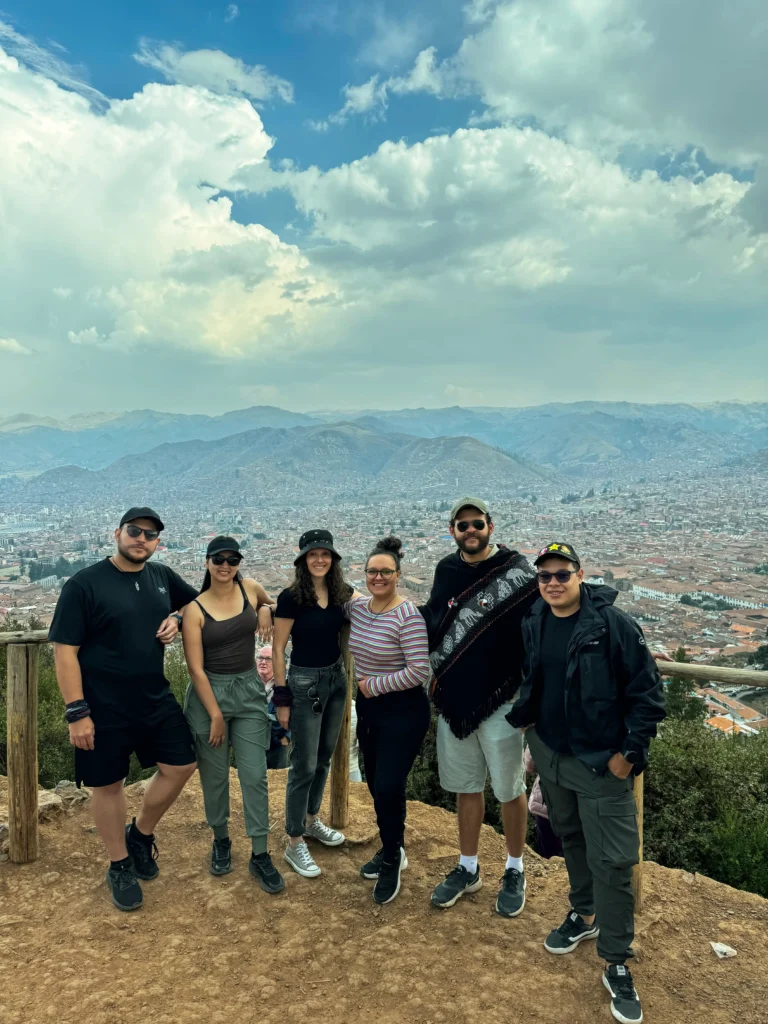
How to Get to Cristo Blanco in Cusco
There are several options to reach Cristo Blanco, catering to different types of travelers:
Options to Visit Cristo Blanco on Your Own
Getting to Cristo Blanco by Taxi
Less interaction with local culture.
Pros:
- It’s quick (about 10 minutes from the center).
- It offers comfort, especially for those who prefer to avoid walking.
- It can be more economical if shared among multiple people.
Cons:
- It costs more compared to walking or using public transport.
Getting to Cristo Blanco by Public Transport
Pros:
- It’s an affordable option.
- It allows interaction with local residents, enriching the cultural experience.
Cons:
- The stop may not be directly at the viewpoint, requiring an additional walk.
- It may be slower due to frequent stops.
Walking to Cristo Blanco Viewpoint
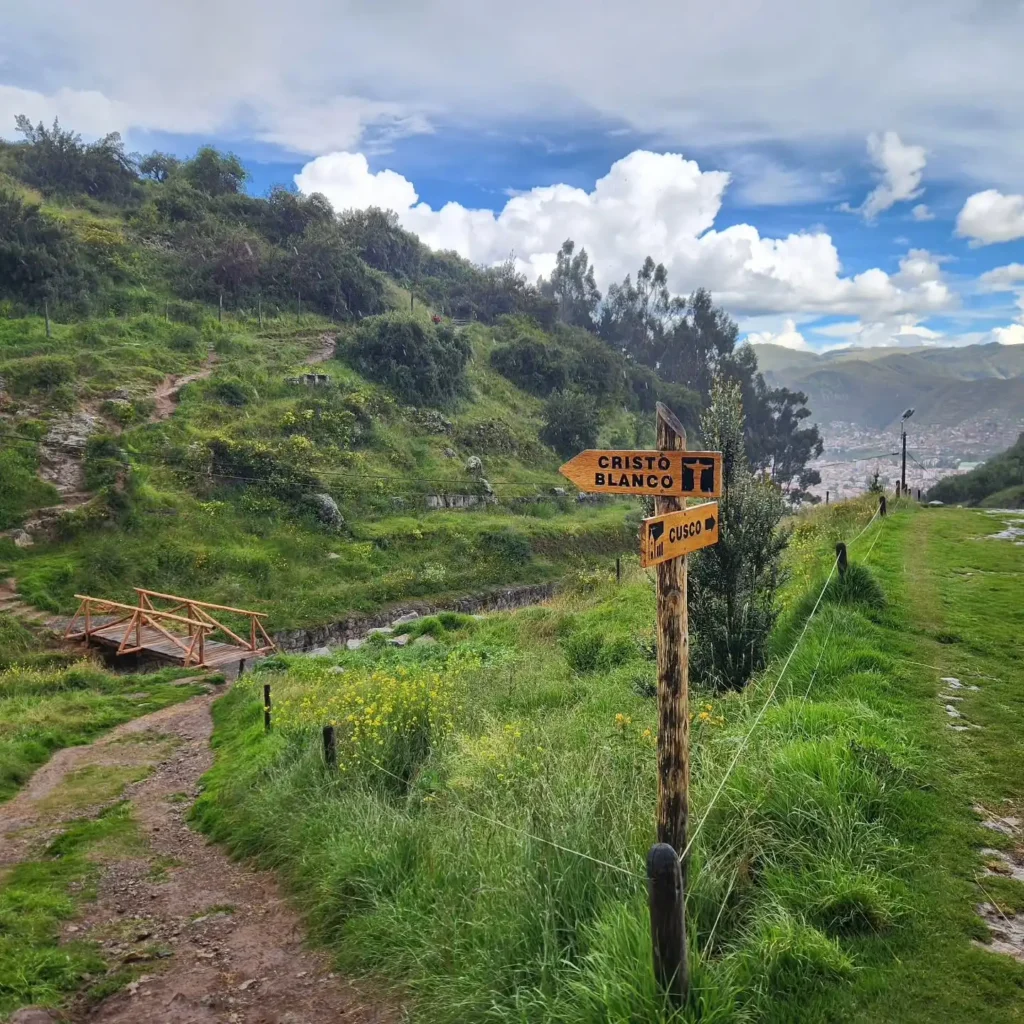
Pros:
- It’s free and a great opportunity for exercise.
- It allows you to enjoy the natural scenery and capture photos from different points.
- The 30 to 40-minute walk is ideal for those looking for an active experience.
Cons:
- It can be challenging for those unaccustomed to walking at high altitudes.
- It requires good physical condition due to inclines and elevation.
Schedules and Costs to Visit Cristo Blanco
- Free access: Entry to Cristo Blanco is free for all visitors, with no differentiated fees for minors, adults, or national and foreign tourists.
- Schedules: The viewpoint is open 24 hours a day, but it is recommended to visit at sunrise or sunset when the light is softer, and the temperatures are pleasant.
- Best time to visit: The best times to enjoy the panoramic views are at sunrise or sunset.
- Available tours: There are guided tours that include Cristo Blanco along with other tourist spots in Cusco. These tours may have an additional cost depending on the duration and included sites.
- Additional costs: While access to the viewpoint is free, some additional services, such as tour guides or transportation, may have associated costs.
- Recommendation: If you plan to take a tour or need transportation, it is advisable to book in advance to secure your spot and get updated information.
Best Time to Visit Cristo Blanco in Cusco
- Dry season (April to October): The best time to visit Cristo Blanco is during the dry season when the weather is more pleasant. During these months, clear skies allow for an unobstructed panoramic view of Cusco and its surroundings.
- Rainy season (November to March): During the rainy season, the terrain may be more slippery, and weather conditions can affect visibility. Frequent rain showers may interfere with the experience, especially if you plan to walk to the viewpoint.
If you want to enjoy optimal views and a more comfortable climate, the dry season months are ideal for planning your visit to Cristo Blanco.
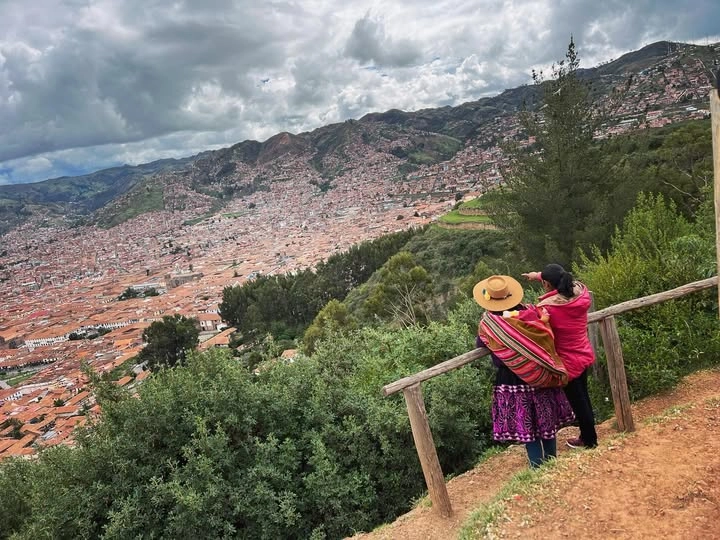
Tips to Enjoy Cristo Blanco Viewpoint
- Visit at sunrise or sunset: Take advantage of the soft light and spectacular landscape colors during these times of the day to capture impressive photos.
- Wear comfortable footwear: If you choose to walk to the viewpoint, wear suitable shoes for the steep and rocky terrain in the area.
- Sun protection: Although Cusco’s climate can be cool, it is advisable to use sunscreen, as the altitude and sun exposure can be intense.
- Stay hydrated: Bring water to stay hydrated, especially if you decide to hike, as the altitude can make you feel more fatigued.
- Bring a camera or phone: Don’t forget your camera or phone to capture panoramic views and the beautiful scenery of the city and mountains.
- Carry a light jacket: Temperatures can change quickly, so it’s recommended to bring a light jacket to be prepared for any weather changes.
- Respect the site: Be mindful of the location and local culture by not leaving trash and taking care of the natural surroundings.
With these tips, your visit to Cristo Blanco will be even more enjoyable and memorable.
Nearby Attractions to Cristo Blanco in Cusco
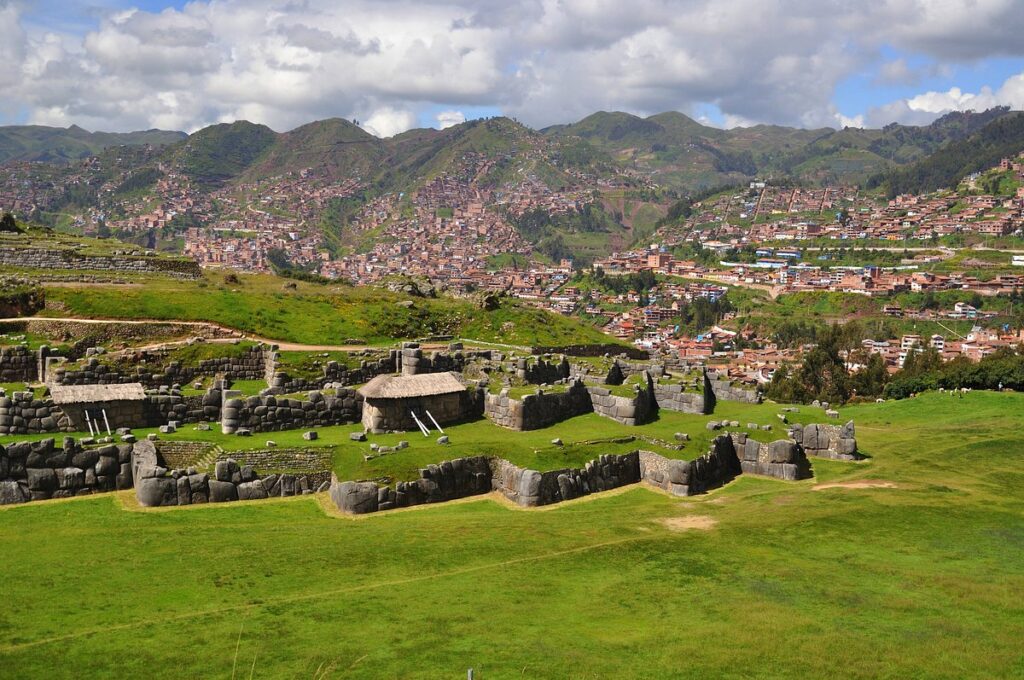
Besides Cristo Blanco, there are other attractions of interest in the surrounding area:
- Sacsayhuamán: An impressive Inca fortress located just a 10-minute walk from Cristo Blanco. It is famous for its enormous perfectly fitted stone blocks, demonstrating the Incas’ advanced engineering.
- Qenqo: A smaller but mysterious archaeological site used in Inca ceremonies. It is located near Sacsayhuamán and offers a unique insight into the religious practices of the time.
- Pukamoqo: The hill where Cristo Blanco is located. According to Andean cosmology, this place has sacred significance, representing the union of the four suyos of the Tahuantinsuyo empire.
These attractions, along with Cristo Blanco, offer a complete experience of Cusco’s history and culture.
